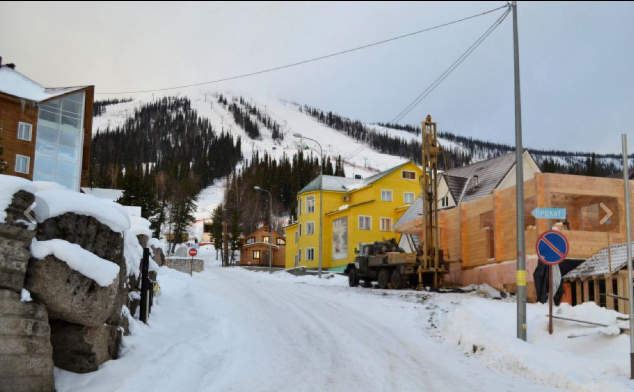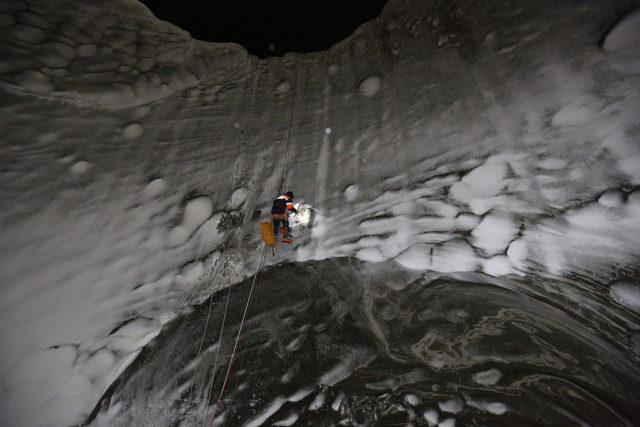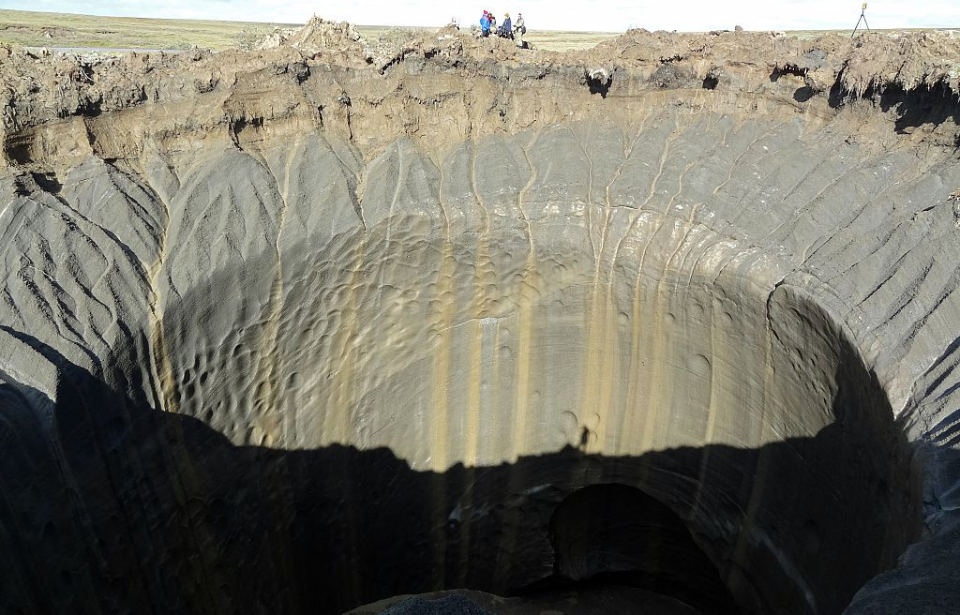Mid-way through December 2022, skiers and snowboarders traveled to the mountains of the Sheregesh Ski Resort in Siberia, Russia, as they have traditionally done since the early 2000s. Town residents and holiday goers alike take to the slopes to relax and unwind. Yet this year they were greeted with something entirely unexpected when a giant crater, dubbed a “gate to hell,” opened nearby.
A less-than-relaxing holiday
The town of Sheregesh was founded in 1912 when the Sheregeshevy brothers discovered iron ore in the region. The area was soon excavated to retrieve the metal. In fact, the mines are still in existence and play an important role in the local economy. They are owned by the Evraz Group, which produces 28 percent of all Russian train wheels and a staggering 97 percent of all the tracks.


Yet this isn’t remotely what the town is known for. The mining industry has been overshadowed by the local ski resort that has grown to be the largest in Siberia, and one of the largest in all of Russia. There has been significant development in the area, including the construction of over 19 ski lifts and 43 different places for people to stay when they visit, with further plans for improvements underway.
Opening up
These two main industries, the ski resort and the mines, collided with each other when a 100-foot-wide “gate to hell” crater opened. Suddenly a cloud of smoke appeared and a cavern opened up in the earth. There were four homes located nearby, one of which was caught right on the edge of the sinkhole. Somehow, it didn’t fall in. The cause of the dramatic crater opening was the collapse of an iron ore mine.
Fortunately, there were no casualties from the incident as it had been predicted that this area would collapse sooner or later. The residents who once lived in the nearby houses had already been moved elsewhere, and the remainder were vacation homes. For town safety, roads near the crater were closed and bus service suspended. Work came to a halt in the remaining parts of the mine while the situation was handled, and the town plans to eventually fill the crater.
Siberian craters
The shocking image of a house teetering on the edge of the large chasm is certainly not one that will be forgotten anytime soon, and yet scientists weren’t surprised at all. Evgeny Chuvilin is the leading researcher at the Center for Petroleum Science and Engineering at the Skolkovo Institute of Science and Technology. He explained that the situation, despite how it might look to the untrained eye, was completely under control and all efforts were made to minimize the impact.


Chuvilin did, however, discuss other Siberian craters that are far less predictable. “They are the result of an explosive release of gas from the upper horizons of the Arctic permafrost,” resulting in “a scatter of rock fragments [and] ice at a distance of several hundred meters around the area of gas breakthrough.”
More from us: An Olive Grove Was Partly Swallowed After Devastating Turkey/Syria Earthquake
He emphasized that these are more likely to happen as climate change gets worse, meaning it is very likely that Russia will have an increasing number of “gates to hell” open in the near future.
